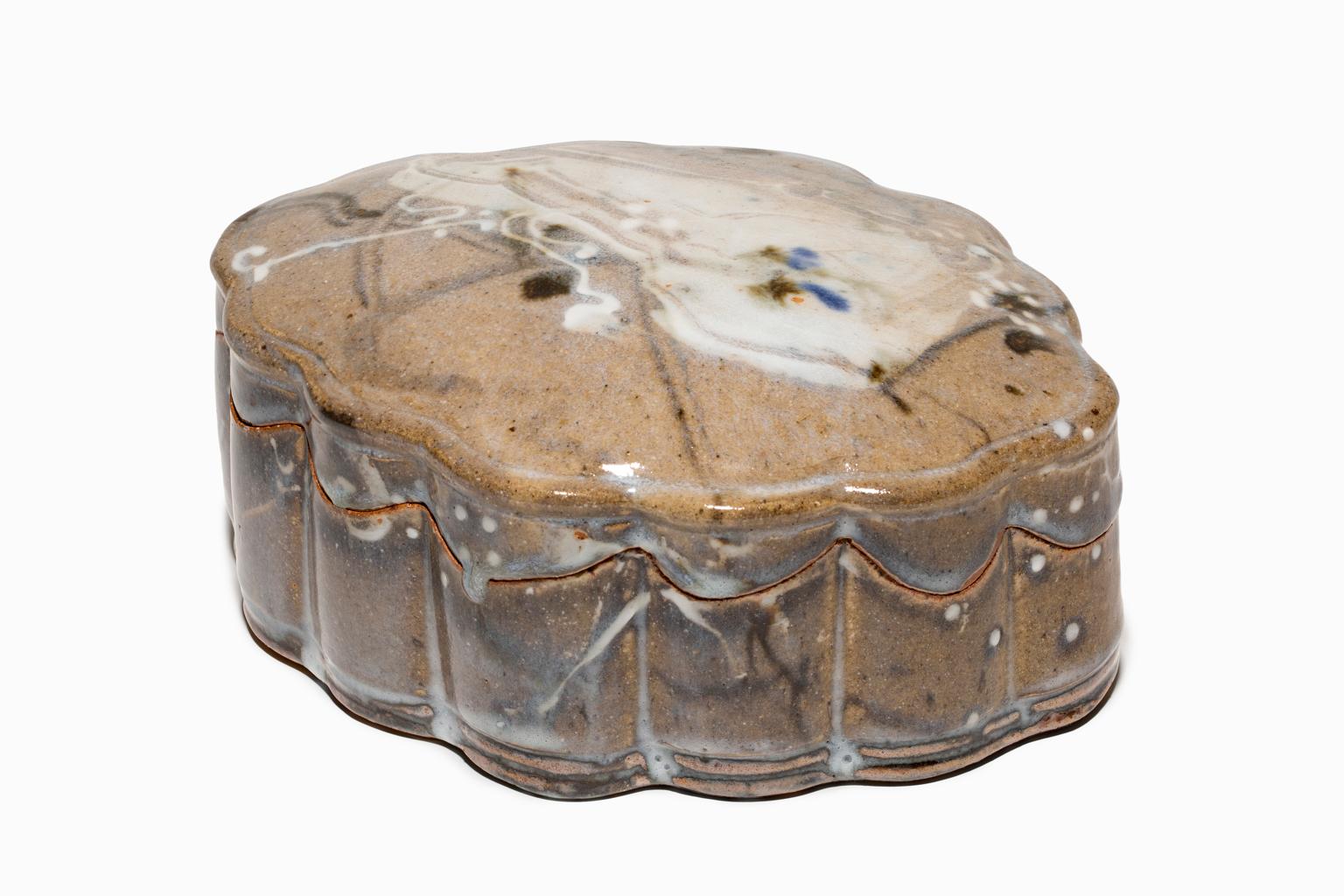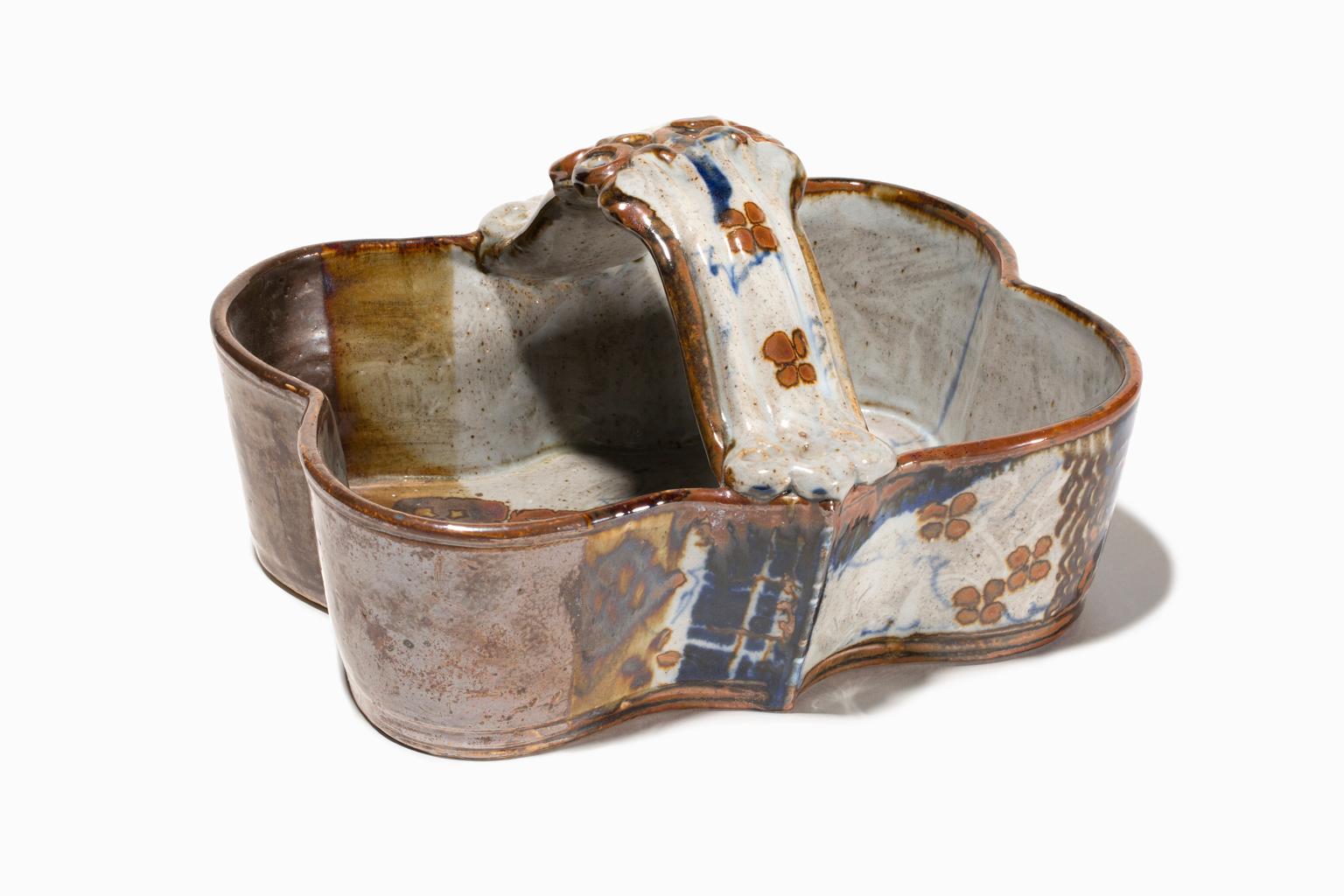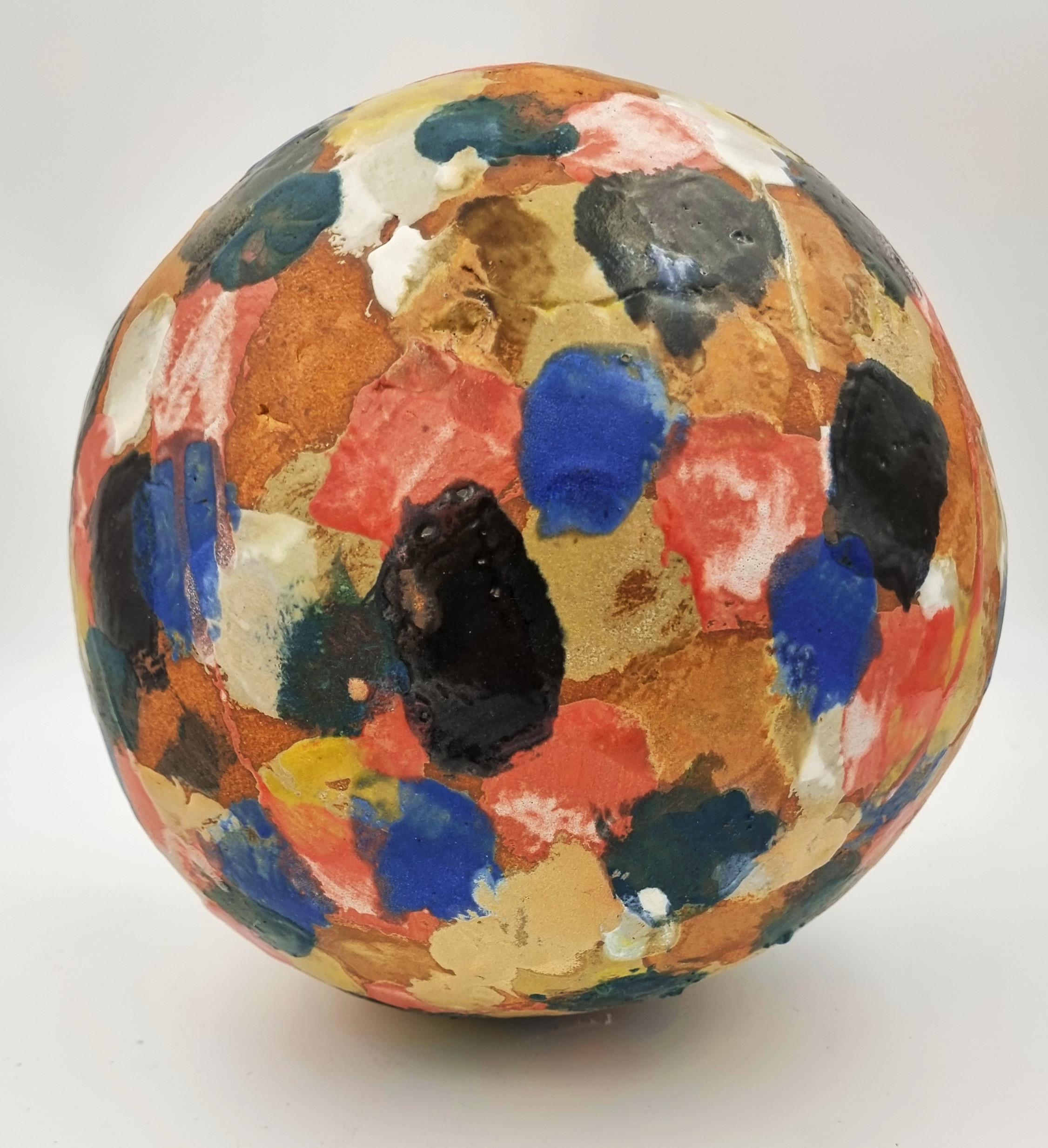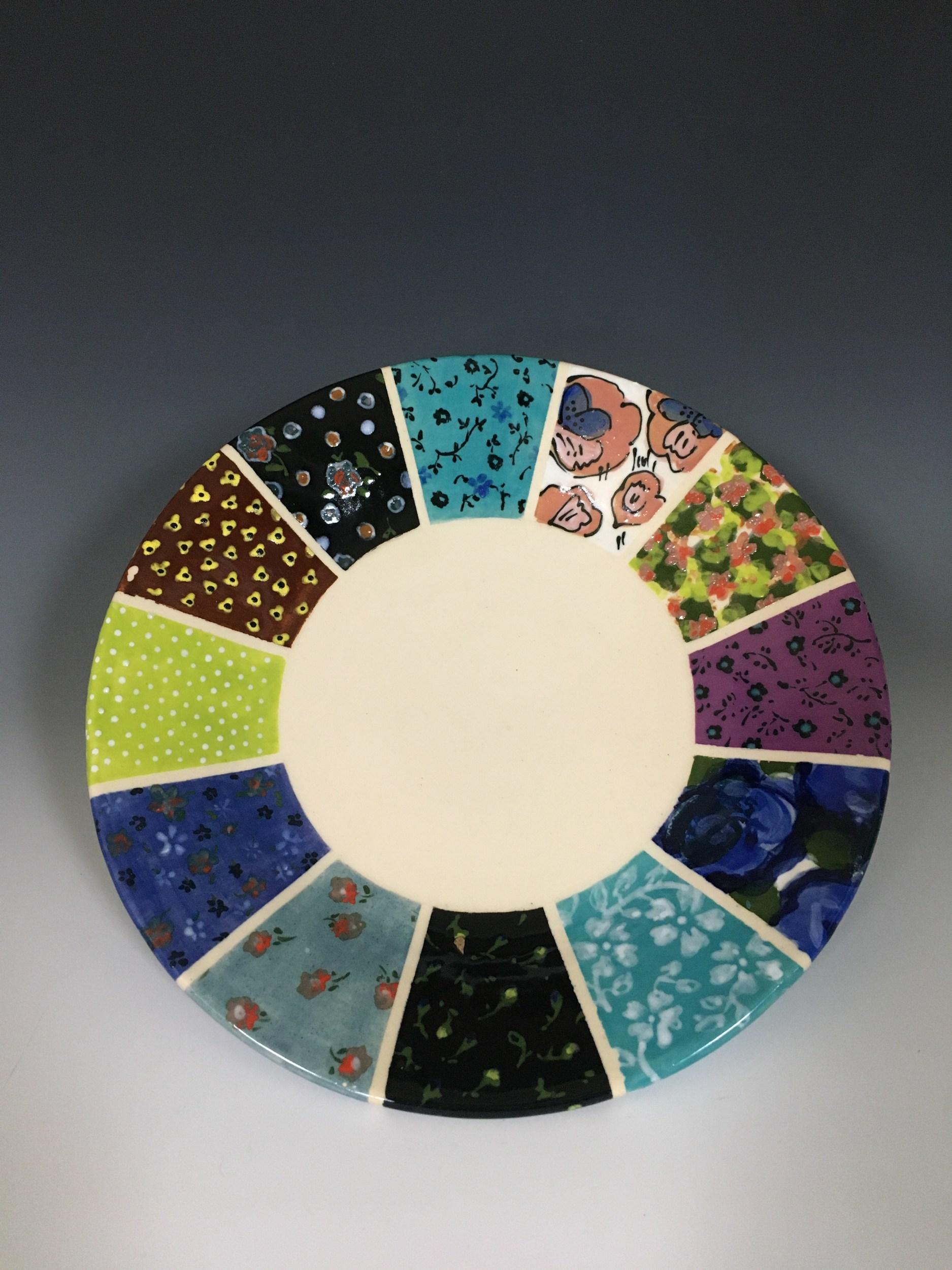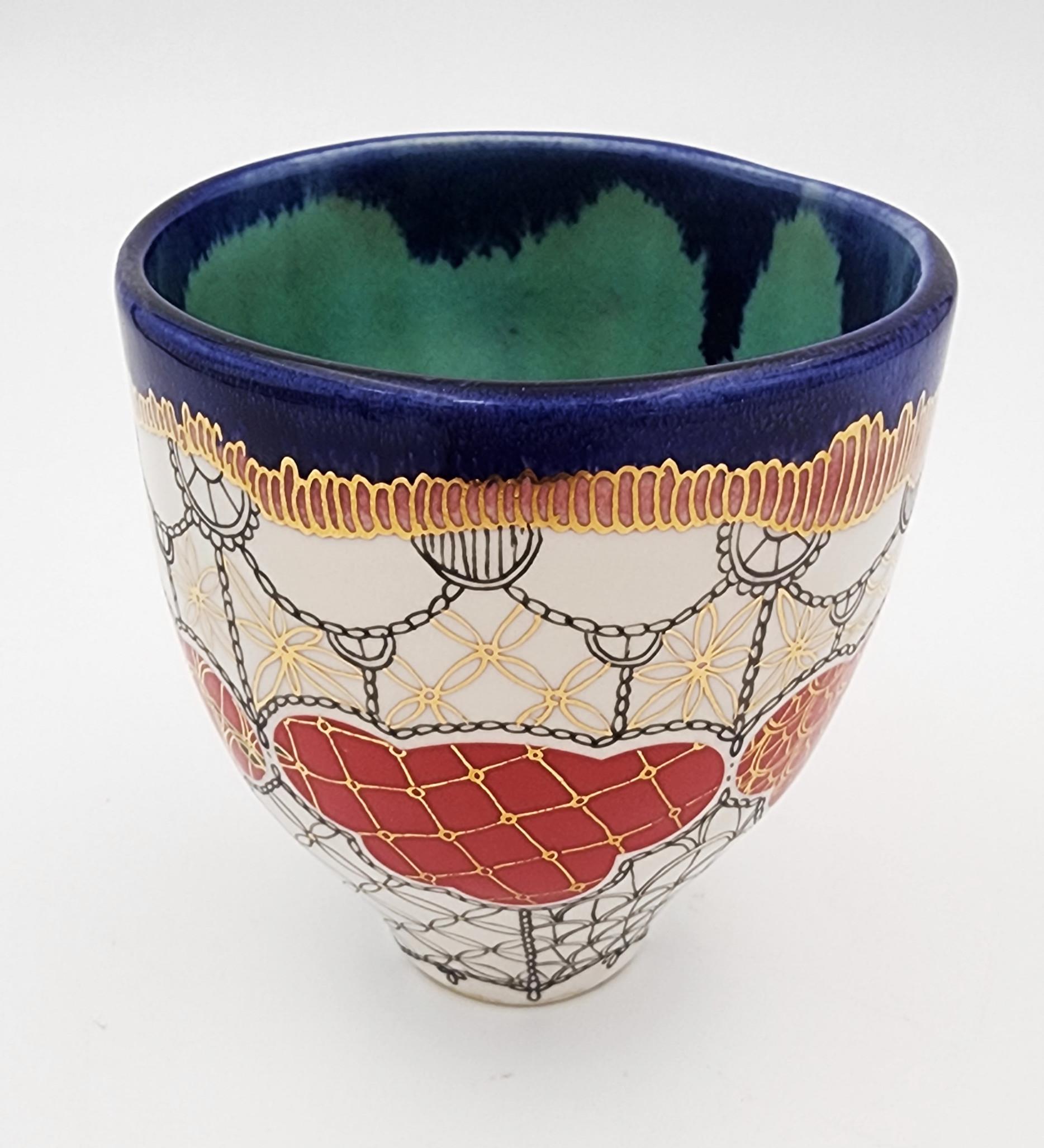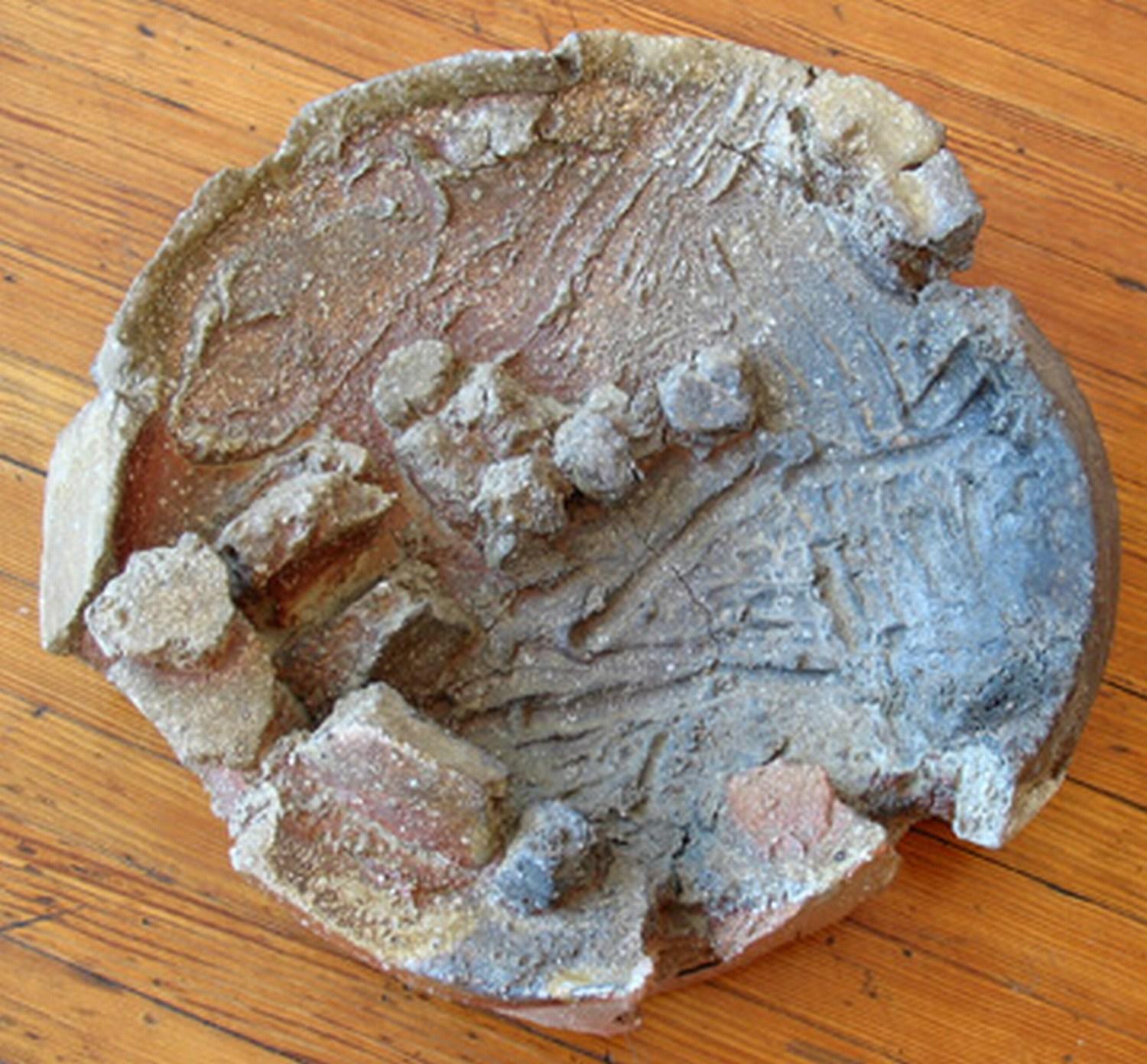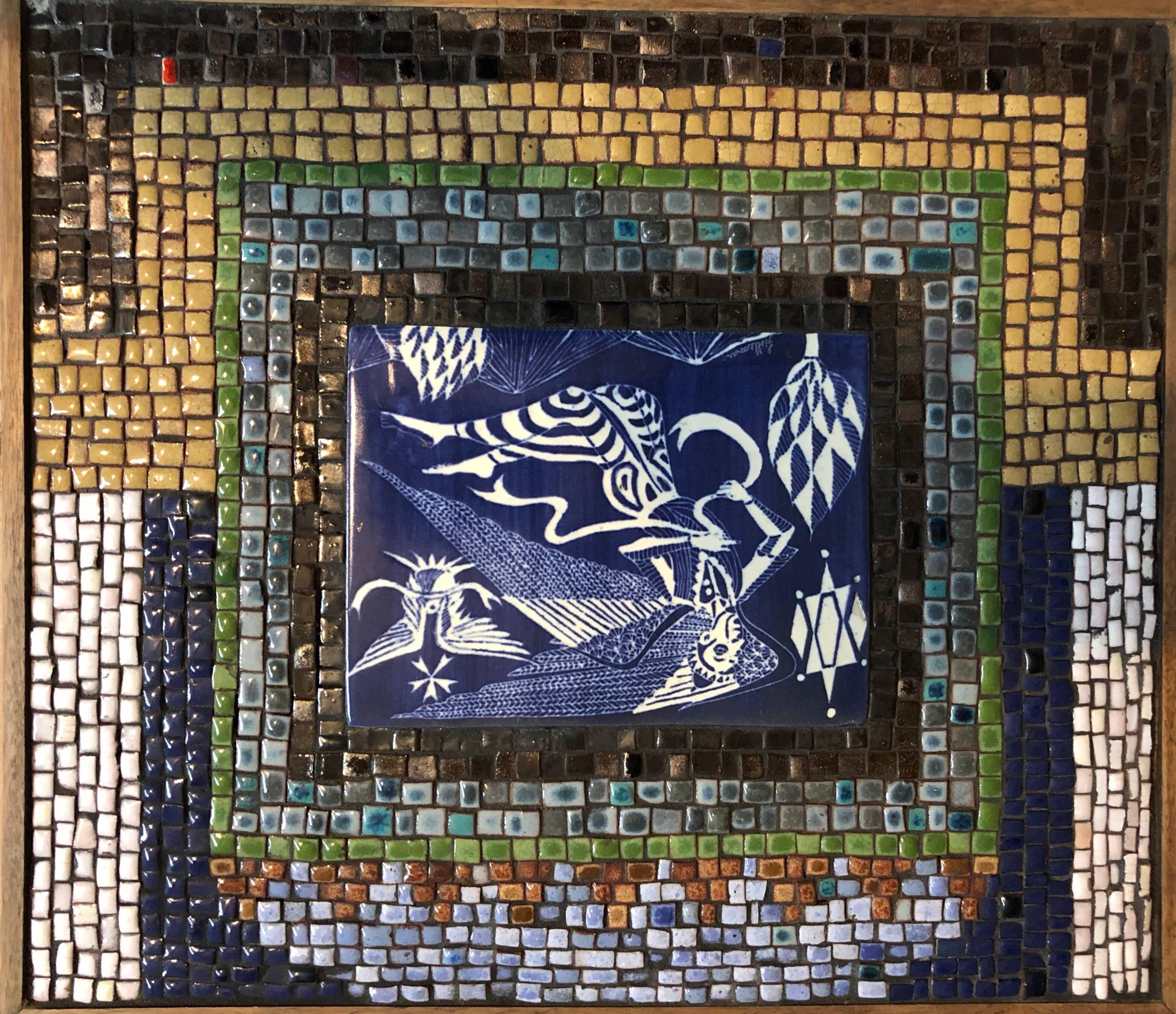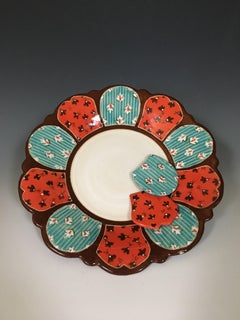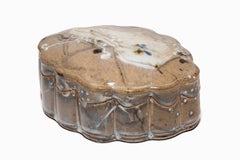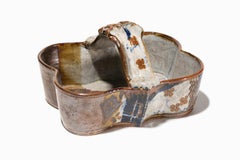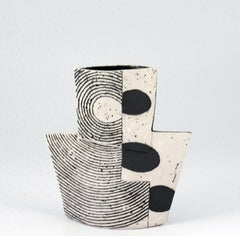
Untitled Vase, arcs and ellipses
View Similar Items
Want more images or videos?
Request additional images or videos from the seller
1 of 5
Harris DellerUntitled Vase, arcs and ellipses2018
2018
About the Item
- Creator:Harris Deller (American)
- Creation Year:2018
- Dimensions:Height: 8.5 in (21.59 cm)Width: 2.75 in (6.99 cm)Depth: 8 in (20.32 cm)
- Medium:
- Movement & Style:
- Period:
- Condition:
- Gallery Location:Kansas City, MO
- Reference Number:Seller: HDE_1811_081stDibs: LU608311137762
About the Seller
5.0
Platinum Seller
These expertly vetted sellers are 1stDibs' most experienced sellers and are rated highest by our customers.
Established in 2016
1stDibs seller since 2017
948 sales on 1stDibs
More From This SellerView All
- Particle VIII (Eight)By Brady McLearenLocated in Kansas City, MOParticle VIII (Eight) Materials: Ceramic, glaze Year: 2016 The formal languages and frequencies that we find in the natural existence of the universe inform and inspire the investig...Category
2010s American Modern More Art
MaterialsCeramic, Glaze
Price Upon Request - Twelve Pattern PlateBy Rachel Hubbard KlineLocated in Kansas City, MORachel Hubbard Kline Twelve Pattern Plate Medium: Stoneware, underglaze, glaze Year: 2021 Size: 1 1/2" x 8" x 8" Description: Wheel-thrown plate with hand-painted textile pattern -...Category
2010s American Modern More Art
MaterialsGlaze, Underglaze, Stoneware
Price Upon Request - Brown 10 Petal PlateBy Rachel Hubbard KlineLocated in Kansas City, MORachel Hubbard Kline Brown 10 Petal Plate Medium: Stoneware, underglaze, glaze Year: 2021 Size: 1 1/4" x 7 3/4" x 7 3/4" Description: Wheel-thrown plate wi...Category
2010s American Modern More Art
MaterialsStoneware, Glaze, Underglaze
Price Upon Request - Untitled Slab with Colored Tears (#891)Located in Kansas City, MOJim Leedy Untitled Slab with Colored Tears (#891) Raku-Fired Stoneware 1989 Approx. 20 in in diameter COA provided Comes with original papers Ref.: #891 Ref...Category
1980s American Modern Sculptures
MaterialsStoneware, Glaze
$4,500 Sale Price40% Off - Untitled Sphere (multi-color)By Carol FlemingLocated in Kansas City, MOCarol Fleming Untitled Sphere (multi-color) Medium: Ceramic, glaze Year: 2020 Size: 12" diameter COA provided ----------------------- Creating is the best and deepest part of me, t...Category
2010s American Modern Sculptures
MaterialsCeramic, Glaze
- Cup with Patterns II (Hand-Painted, Gold Luster)By Melanie ShermanLocated in Kansas City, MOMelanie Sherman Cup with Patterns II (Hand-Painted, Gold Luster) Porcelain, Glaze, Porcelain Paint, Hand-made Vintage Decals, Gold Luster, Platinum Luster Year: 2022 Size: 3x3.25x3.2...Category
2010s Modern More Art
MaterialsLuster, Porcelain, Paint, Glaze, Underglaze
$148 Sale Price40% Off
You May Also Like
- Magnificent John Glick Plum Street Pottery "Scalloped Box" Glazed StonewareLocated in Detroit, MIThis magnificent "Scalloped Box" is a stoneware piece with decorative layers of rich toned glazes and markings that John was so well-known for. He was, also, known for the undulating lip lines on his exquisite boxes that fit together like a puzzle. Each piece that John produced was unique. He was seduced by the effects of the reduction kiln, which decreased the levels of oxygen during firing, inducing the flame to pull oxygen out of the clay and glazes thereby changing the colors of the glazes depending on their iron and copper content. In this way he achieved the rich gradients of ochre and umber and variations in stippling and opacity. This piece is signed and stamped on the bottom. John was an American Abstract Expressionist ceramicist born in Detroit, MI. Though open to artistic experimentation, Glick was most influenced by the styles and aesthetics of Asian pottery—an inspiration that shows in his use of decorative patterns and glaze choices. He has said that he is attracted to simplicity, as well as complexity: my work continually reflects my re-examination that these two poles can coexist… or not, in a given series. Glick also took influences from master potters of Japan, notably Shoji Hamada and Kanjrio Kawai, blending their gestural embellishments of simple forms with attitudes of Abstract Expressionism. He was particularly drown to the work of Helen Frankenthaler whose soak-stain style resonated with Glick’s multi-layered glaze surfaces, which juxtaposed veils of atmospheric color with gestural marks and pattern. He spent countless hours developing and making his own tools in order to achieve previously unseen results in his work with clay and glaze. Glick’s “Plum Tree Pottery...Category
Late 20th Century American Modern Abstract Sculptures
MaterialsStoneware, Glaze
- Breathtaking John Glick "Scalloped Basket" Glazed Stoneware Reduction FiredLocated in Detroit, MI"Scalloped Basket" is a stoneware piece with the decorative layer of the rich toned glazes and markings that John was so well-known for. He was, also, known for the undulating lip lines on his exquisite pieces. The basket portion is shaped with gentle curves and a sculptural handle. Each piece that John produced was unique. He was seduced by the effects of the reduction kiln, which decreased the levels of oxygen during firing, inducing the flame to pull oxygen out of the clay and glazes changing the colors of the glazes depending on their iron and copper content. In this way he achieved the rich gradients of ochre and umber and variations in stippling and opacity. This particular "basket" also has the cool blues and grays that contrast with the umber. It is signed and stamped on the bottom. John was an American Abstract Expressionist ceramicist born in Detroit, MI. Though open to artistic experimentation, Glick was most influenced by the styles and aesthetics of Asian pottery—an inspiration that shows in his use of decorative patterns and glaze choices. He has said that he is attracted to simplicity, as well as complexity: my work continually reflects my re-examination that these two poles can coexist… or not, in a given series. Glick also took influences from master potters of Japan, notably Shoji Hamada and Kanjrio Kawai, blending their gestural embellishments of simple forms with attitudes of Abstract Expressionism. He was particularly drown to the work of Helen Frankenthaler whose soak-stain style resonated with Glick’s multi-layered glaze surfaces, which juxtaposed veils of atmospheric color with gestural marks and pattern. He spent countless hours developing and making his own tools in order to achieve previously unseen results in his work with clay and glaze. Glick’s “Plum Tree Pottery...Category
1970s American Modern Abstract Sculptures
MaterialsStoneware, Glaze
- John Glick Plum Street Pottery Glazed Bowl Reduction FiredLocated in Detroit, MI"Untitled" is a stoneware piece with the decorative layer of the rich toned glazes and markings that John was so well-known for. Each piece that John produced was unique. The lip on this piece is slightly scalloped and the shape is removed from the boring circular to mimic a gentle geometric design. He was seduced by the effects of the reduction kiln, which decreased the levels of oxygen during firing, inducing the flame to pull oxygen out of the clay and glazes changing the colors of the glazes depending on their iron and copper content. In this way he achieved the rich gradients of ochre and umber and variations in stippling and opacity. This piece is signed and stamped on the bottom. John was an American Abstract Expressionist ceramicist born in Detroit, MI. Though open to artistic experimentation, Glick was most influenced by the styles and aesthetics of Asian pottery—an inspiration that shows in his use of decorative patterns and glaze choices. He has said that he is attracted to simplicity, as well as complexity: my work continually reflects my re-examination that these two poles can coexist… or not, in a given series. Glick also took influences from master potters of Japan, notably Shoji Hamada and Kanjrio Kawai, blending their gestural embellishments of simple forms with attitudes of Abstract Expressionism. He was particularly drown to the work of Helen Frankenthaler whose soak-stain style resonated with Glick’s multi-layered glaze surfaces, which juxtaposed veils of atmospheric color with gestural marks and pattern. He spent countless hours developing and making his own tools in order to achieve previously unseen results in his work with clay and glaze. Glick’s “Plum Tree Pottery...Category
1970s American Modern Abstract Sculptures
MaterialsStoneware, Glaze
- Rare Vintage Judaica Tile Mosaic with Sgraffito Hebrew CalligraphyBy David HollemanLocated in Surfside, FLRare Vintage Judaica , extraordinary mosaic with sgraffito decorated ceramic tiles and Hebrew calligraphy by important ceramicist and mosaic artist David Holleman (b. 1927). Holleman was born in Massachusetts and studied at the Scott Carbee School of Art. He became acquainted with German Expressionism while serving in Berlin during World War II and was influenced by Carl Hofer, who inspired him to turn from paint to ceramics when he entered the Boston Museum School in 1948. Mr. Holleman's pottery won prizes at the National Ceramics Shows and has been purchased by the National Gallery in Washington D.C.; the Carnegie Institute, PA; Syracuse Museum, NY; Louisville Junior Museum, KY; Middlebury College...Category
20th Century American Modern Mixed Media
MaterialsCeramic, Mosaic
- Mid-Century Metal and Colored Glass Sculpture - Like Stained GlassLocated in Miami, FLMid-Century enameled steel, glass sculpture that is visually balanced from 360 degrees. All the positive and negative spaces work in total harmony which is a testament to Samuel Cashwan...Category
1950s American Modern Abstract Sculptures
MaterialsSteel
- The Test, Assembled Kinetic Modernist Sculpture Puzzle ConstructionBy William King (b.1925)Located in Surfside, FL"The Test," 1970 Aluminum sculpture in 5 parts. Artist's cipher and AP stamped into male figure, front, 20 5/16" x 12 1/2" x 6 5/7" (approx.) American sculptor King is most noted for his long-limbed figurative public art sculptures depicting people engaged in everyday activities such as reading or conversing. He created his busts and figures in a variety of materials, including clay, wood, metal, and textiles. William Dickey King was born in Jacksonville, Florida. As a boy, William made model airplanes and helped his father and older brother build furniture and boats. He came to New York, where he attended the Cooper Union and began selling his early sculptures even before he graduated. He later studied with the sculptor Milton Hebald and traveled to Italy on a Fulbright grant. Mr. King worked in clay, wood, bronze, vinyl, burlap and aluminum. He worked both big and small, from busts and toylike figures to large public art pieces depicting familiar human poses — a seated, cross-legged man reading; a Western couple (he in a cowboy hat, she in a long dress) holding hands; a tall man reaching down to tug along a recalcitrant little boy; a crowd of robotic-looking men walking in lock step. Mr. King’s work often reflected the times, taking on fashions and occasional politics. In the 1960s and 1970s, his work featuring African-American figures (including the activist Angela Davis, with hands cuffed behind her back) evoked his interest in civil rights. But for all its variation, what unified his work was a wry observer’s arched eyebrow, the pointed humor and witty rue of a fatalist. His figurative sculptures, often with long, spidery legs and an outlandishly skewed ratio of torso to appendages, use gestures and posture to suggest attitude and illustrate his own amusement with the unwieldiness of human physical equipment. His subjects included tennis players and gymnasts, dancers and musicians, and he managed to show appreciation of their physical gifts and comic delight at their contortions and costumery. His suit-wearing businessmen often appeared haughty or pompous; his other men could seem timid or perplexed or awkward. Oddly, or perhaps tellingly, he tended to depict women more reverentially, though in his portrayals of couples the fragility and tender comedy inherent in couplehood settled equally on both partners. His first solo exhibit took place in 1954 at the Alan Gallery in New York City. King was elected to the American Academy of Arts and Letters in 2003, and in 2007 the International Sculpture Center honored him with the Lifetime Achievement in Contemporary Sculpture Award. Mr. King’s work is in the collections of the Metropolitan Museum of Art, Guggenheim Museum, Whitney Museum and the Museum of Modern Art in New York and the Hirshorn Museum at the Smithsonian American Art Museum in Washington, among other places, and he had dozens of solo gallery shows in New York and elsewhere. Reviews of his exhibitions frequently began with the caveat that even though the work was funny, it was also serious, displaying superior technical skills, imaginative vision and the bolstering weight of a range of influences, from the ancient Etruscans to American folk art to 20th-century artists including Giacometti, Calder and Elie Nadelman. The New York Times critic Holland Cotter once described Mr. King’s sculpture as “comical-tragical-maniacal,” and “like Giacomettis conceived by John Cheever.”Category
1970s American Modern Figurative Sculptures
MaterialsMetal
Recently Viewed
View AllMore Ways To Browse
South America Sculpture
The Thinker Sculpture
Florida Sculpture
Perspective Sculpture
Black Human Sculpture
Life Size Bronze
Wire Used For Sculpture
Contemporary Marble Sculpture
Large Human Sculptures
Abstract Man Sculpture
Sculpture Human Figures
Dimensional Wall Sculpture
Black Toy
Three Dimensional Wall Art
Sculpture Embrace
Animal Found Art Sculpture
Art Words Sculpture
Yellow Abstract Sculpture
